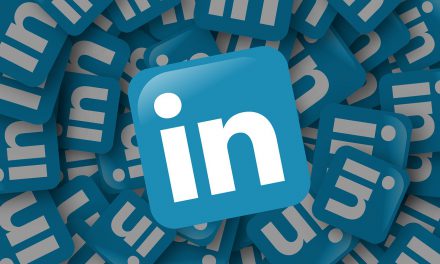Get Ahead Of The Narrative By Creating This MSP Marketing Content Immediately
I am a consumer of a lot of content. I compare this to a Chef constantly tasting different foods to improve their palette and the quality of the dishes they create. Having these sponge-like tendencies allows for me to often connect dots between various things that I consume and start to put together trends in my head to use in marketing tactics. What I have learned lately is that the narrative that the Coronavirus has created throughout the business community is almost as dynamic as the virus itself. It seems to change week-after-week as everyone adapts to new realities and prepares for the latest round of isolated combat. First it was remote-work transitions, then video conferencing security flaws, now we appear to be hitting the philanthropic stage of who is chipping in what to help the cause.
What this all equates to is that there is a benefit from being early (but not too early) when it comes to putting out the right message at the right time. For example, if you were posting content about remote work solutions two weeks prior to your area’s stay-at-home order, you probably were too early. If you happened to post the same content the week that everyone was scrambling to make the transition, this is when you would have likely seen the most engagement. By the end of that week however, there was a wave of very similar content suddenly crashing over feeds, with much of it just getting lost in the digital ocean.
Now that we know the importance of the right message at the right time, it is important to try to predict what will be appropriate next and begin working on that content right now so that it is ready when you need it. Here are a few ideas that MSPs can build off of to put out content that is timely and relevant over the next few weeks (or months).
Compare Long-term Solutions Based On Your Customer’s Trial Feedback
As businesses suddenly had to adapt to new workflows, many have had to trial new products and services to do so. As an MSP, you were hopefully able to influence these decisions, but it is not likely that every customer moved on to the same solutions. This makes IT Providers a great data collection point between these products, to offer insight into their performance when put to the test of full-time usage.
Start to gather feedback from your customers about each of the solutions they have utilized and find out whether or not each has long-term viability. For example, comparing Zoom, Slack & Teams with anecdotes from your customer’s actual use of them may be beneficial to businesses that are looking to either stick with what they have used during this period or try something else. Many of these decision will have to be made within the next 30-60 days (if not sooner) so it will be ideal to have this content ready when the time comes.
The Ultimate Guide To Cash Flow For Managed Services
Sponsored by Alternative Payments & Zest
Make A Technology Check-list for Businesses Transitioning Back To Normal Operations
Much like the challenges that businesses faced when going remote, transitioning back to normal operations may not be a cakewalk either. As there have been many semi-permanent changes made to IT infrastructure and workflows, many of these will have to be reverted back once the stay-at-home order is lifted or adapted as the new normal.
Create a checklist for businesses to ensure that their technology is ready for this transition and that nothing is overlooked. For example, are there changes in call-routing that need to be made? Do abandoned desktop machines that have been collecting dust require OS updates? Run through a few transitions for your own customers and use this information to compile a list that would be relevant to most other businesses as well.
Create A Customer Self-Audit For Past & Future Readiness Of Similar Issues
For a lot of MSPs, there were “I told you so” moments between them and their customers when many were forced to adopt technology that they have been putting off for years. While this is not the time to gloat, it is still important for both businesses and their IT Providers to recognize how ready they were when this began, what they did to address it, and how ready they will be in the future.
Put together a self-audit for businesses to score themselves (or their IT provider) on how ready they were and whether or not that situation has improved the next time something similar occurs. This information will not only be helpful for companies to suddenly realize the importance of their MSPs recommendations, but it will also help them discover whether or not their MSP made the right recommendations at all.
The Ultimate Guide To Cash Flow For Managed Services
Sponsored by Alternative Payments & Zest
Highlight Ways Under-Staffed Companies Can Utilize Time-Saving Technology
While it would be great if every company that made layoffs over the next few weeks was able to hire employees back and resume normal staffing levels, this will not be the case. As business picks up again, many will be under-staffed and will be left with the decision to either stay lean or start hiring again.
This is the perfect opportunity to highlight ways that businesses can automate processes or adopt new technologies to increase productivity and save their company time. While “putting people out of work” seems somewhat gloomy at a time like this, adopting technology just creates more demand on the technology end the market. If the current situation proves anything, it’s that the technology sector is somewhat stable. Taking workers away from less stable industries and adding them into the technology market will help move our economy forward and lessen the impact next time something like this occurs.
Unpack Everything You’ve Learned & How Your Business Will Change
The one thing that we can bank on at the end of this situation is that there will be a “new normal.” In fact, if there is not a “new normal” it means we did not learn anything from this experience. Companies should not just re-open their doors and act like nothing happened. This only makes us more vulnerable in the future.
What will be important is that we are able to not only learn from our own experiences but that everyone will be willing to share their experiences and what they have learned. Look to become a part of this dialogue in your community by opening up about all your trials and tribulations over the last few weeks, what it has taught you about your business, and how you are changing your business for the better. Self-reflection is incredibly important, and doing it publicly can help others in ways that you may never realize.

SPONSORED BY ZEST

















